Before we step into Sasha Paulsen’s exploration of Steve Sando’s, his bean empire and his foray into a singing career, here’s a quick reminder: Napa Valley Features is a reader-funded publication. Without support from new and returning subscribers, stories like these could become fewer, or we might be forced to close altogether. If you enjoy our ad-free, independent local reporting, please consider becoming a paid subscriber. For as little as 16 cents a day you can help keep stories like this alive and vibrant.
NAPA VALLEY, Calif. — It should come as no surprise that Steven Sando is a romantic. There had to have been a streak of Quixote in a man who set out to elevate the humble bean, save untold numbers of heirloom varieties by showing farmers their value – the beans and the farmers — and introduce the rest of the world to unknown delights.
That he has succeeded in creating a “Jack in the Beanstalk” kind of magic is inarguable: His beans have achieved the status of a cult wine; his newly published work, “The Bean Book,” made The New York Times bestseller list; and his Bean Club has a waiting list to join.
And how is Sando celebrating his success? He is singing, and this is not just warbling in the rain. At present, he is recording his fourth CD.
“I’ve always been too embarrassed to sing, to do it out-loud, not even in the shower,” he said.
Instead, he collected songs over the years, and true to his following-his-own-drummer approach to life, he didn’t only go for the predictable standards from the Great American Songbook. He found lesser-known works that nonetheless tickle the imagination and tug at possibilities in the ups and downs of romance.
He collected them obsessively, he said, but never dared to sing them.
“But turning 60, I thought, screw it; if not now, when?”
It was another benchmark birthday that set Sando on the road to becoming the king of beans, as he has been called.
In “The Bean Book,” Sando recounts his early meeting with beans and subsequent enduring love affair. At the age of 40, after a checkered career as an entrepreneur, he had “reached the end of the line,” he writes. He was steeling himself to get “a bad job at a big box company” but first he planted a garden, in which he grew, among other things, beans. At the first taste of a pot of Rio Zape beans, “I was hooked.”
“I quickly realized I was a better evangelist than a grower,” he said, “and now my company, Rancho Gordo, works with several farms on the West Coast, in Mexico and in Europe to bring in my favorite varieties.”
First, he began selling beans at local farmers markets.
“I was rather lonely,” he writes. “It was the early 2000s and in general people were kind but also felt sorry for me because I was so passionate about such a ‘loser’ ingredient.”
One person, however, who was not moved by pity but impressed by quality was Chef Thomas Keller of Yountville. Sando’s Ranch Gordo beans soon began appearing on restaurant menus. He also opened a shop in Napa, off the beaten track, fronting a warehouse where the beans were packaged to be shipped.
In a colorful place decorated with posters from Mexican movies and packages of beans with names such as Ayocote, Zolfino, Yellow Eye, Snowcap and Santanero Negro Delgado, he also provided a stone bowl filled with a rainbow of beans that customers could run their hands through just to feel them, and they did.
The launch of his business coincided with the advent of the internet and online shopping.
“I found I was most comfortable talking to other home cooks via the farmers market or the internet,” he said, “so we kept the business primarily direct to consumer, an idea that hadn’t quite taken hold when we started but now is a standard practice.”
This became an enormous advantage when COVID-19 intensified interest in home cooking. Rancho Gordo bean sales skyrocketed, with supplies often selling out, a trend that continues in the post-pandemic world.
Today the business is thriving, employing 34 people locally, with stock expanded to include popcorn, dried corn, chocolate, vinegars and spices. Sando, traveling the world in search of products, does have something to sing about.
Nonetheless, he said, he had to summon all his nerve to approach Mike Greensill, the internationally renowned jazz pianist who now lives in St. Helena, to broach the idea of recording a CD with Greensill’s Trio, which includes Ruth Davies on bass and Jack Dorsey on drums.
“I was so uncomfortable,” Sando said. “I felt like I was auditioning for porn. I was so scared, I couldn’t really sing.”
But Greensill took a chance on him, and the result was “Introducing Steve Sando,” 14 songs, that, like the names of his beans, one might never have heard of: “With the Wind and Rain in Your Hair,” “One Never Knows,” “I’m Old-Fashioned.”
“I didn’t want to do ‘Night and Day’ or ‘I’ve Got You Under My Skin,’” Sando said. “I wanted to do the B side. Maybe I intrigued (Mike) with my taste.”
Their second collaboration produced “Fancy Meeting You,” with songs from 1933 (“Close Your Eyes”) to 1946 (“Any Place I Hang My Hat is Home”).
The third CD, “Rules of the Road,” included, among “You’re a Sweetheart,” “Jump for Joy” and “It Never Was You,” a familiar one from Rogers and Hart: “Isn’t It Romantic?”
Sando is now at work on a fourth recording, this time venturing out to work with the Hot Club of San Francisco.

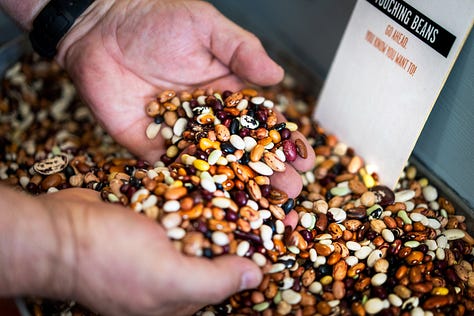
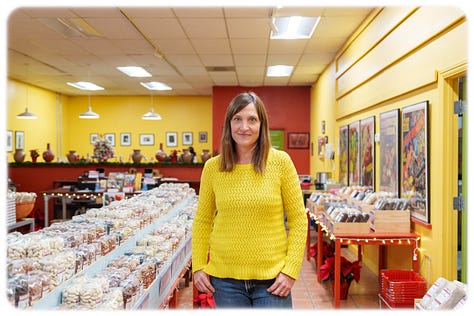
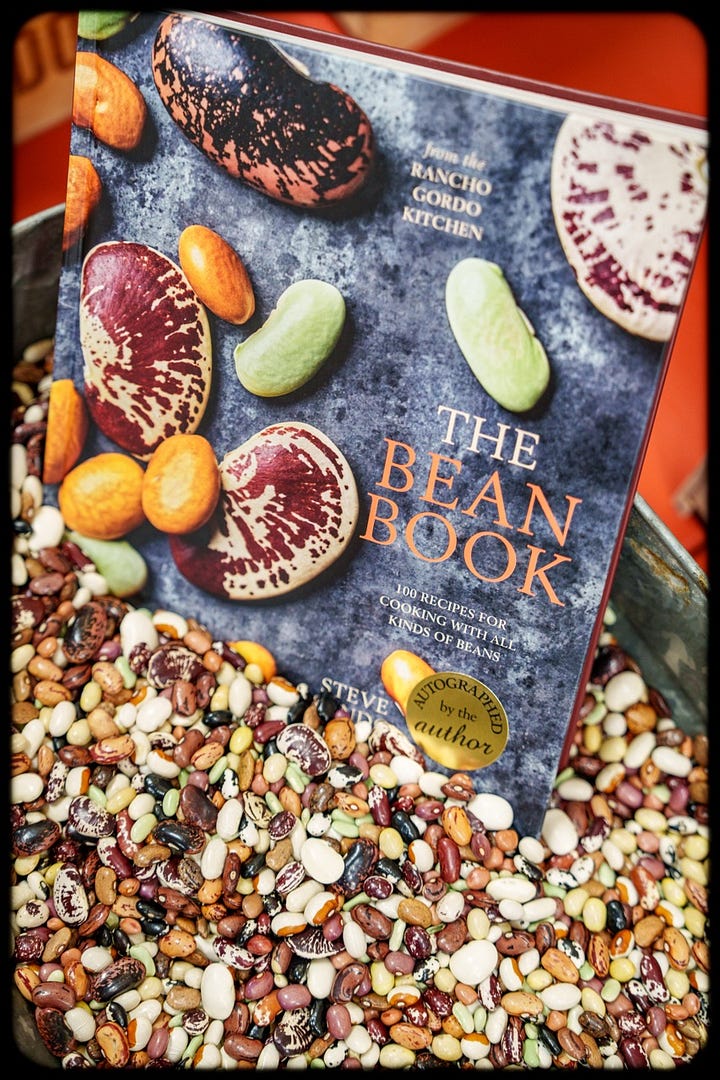



“It’s gypsy jazz,” he said. “And violin with Mads Tolling.”
The more he sings, the bolder he grows. One of the songs he is recording for the new CD is “Once Upon a Time,” he said. “And because I am gay, I am going to sing ‘he’ – as in “Once upon a time a boy with moonlight in his eyes.”
“I love it,” he said. “It’s about young love and how innocent you are. A time when ‘I was happy.’”
“I don’t do things casually,” Sando admitted. “Melody is key to me. Harmony, melody and rhythm are the ingredients I like best.”
Like cooking?
“Yes. Like cooking.”
He casually mentioned his music one night when he was cooking dinner for friends in his house, a converted chapel set among pine trees on a verdant slope in the Mayacamas Mountains.
The expected topic was “The Bean Book” because after self-publishing a series of cookbooks about beans with Julia Newberry, a long-time associate at Rancho Gordo, they had made the move to Ten Speed Press.
“The Bean Book” introduces 50 different beans with names like Eye of the Goat (“elusive … when you cook them – preferably with just onion, garlic, olive oil, water and salt – the heavens open up, the angels sing and you float among the clouds filled with hope (and delicious beans)” and Good Mother Stallard “which almost always knocks the socks off the lucky eater” with “a deep purple color that calls to mind the Milky Way at dusk.”
In addition to general instructions for cooking beans (“The very good news is that you have to work extra hard to mess up a pot of beans.”), he also includes 100 recipes, some from local chefs, such as Alexis Handelman’s Wild Rise and Heirloom Bean Salad for a Crowd and Sarah Scott’s Napa Valley Cassoulet.
The recipes are enticing, the illustrations lavish and the encouragement abundant.
“Cook a pot of beans and see where it leads,” he writes. “I can attest it’s typically someplace wonderful.”
Of the book’s appearance on The New York Times bestseller list, he said, “It’s so weird having a mainstream success. Everything I’ve done has been not mainstream – so this is kind of shocking. I’ve always thought that I’m never going to appeal to McDonald’s.”
And now he will sing to you as you follow his recipes. His music is on Spotify and Youtube, and the CDs can be purchased at the Ranch Gordo store on Yajome Street in Napa. Selling the CDs, however, was not his object.
“Every day’s a show at Ranch Gordo,” he said, hinting at more surprises soon to come. “I am doing this for me.”
Then he added, “I don’t want to overstate our importance in the long history of beans, but I will say I am happy we found each other. It has been a great happy relationship.”
If today’s story captured your interest, explore these related articles:
Sunday E-dition: Yäger Galerie Hosts Sacred Icon Exhibit for Christmas
Sunday E-dition: Rediscovering Quince, California's Forgotten Fall Fruit
Sunday E-dition: Paws for Peace Supports Domestic Violence Survivors
Sunday E-dition: Napa's Haunting Spirits — A Ghostly Trilogy
Sunday E-dition: Calistoga and Its Library – a Century Long Retrospective
The Historical (And Personal) Significance of Mexican Independence Day
Sasha Paulsen is a journalist and novelist who lives in Napa.
Levity Corner
Caption contest: Pick your favorite caption or add your own in the comments below.
Possible captions:
"Not your average Napa headliner."
"Breaking the mold, one pot of beans at a time."
"Who knew beans had such a ‘note-worthy’ talent?"
"This bean proves you don’t need a vineyard to thrive in Napa."
"Bean there, sung that!"
Last week’s contest results
In “Sunday E-dition: Yäger Galerie Hosts Sacred Icon Exhibit for Christmas,” the winning caption was, "They said, 'Paint what you love most.'" with 60% of the votes.
"If I can’t catch the mouse, I’ll just immortalize it."
"They said, 'Paint what you love most.'"
"Step one: Paint the mouse. Step two: Frame it as 'Wanted.'"
"I call it ‘The One That Got Away.’"
"My inner muse whispered, 'Paint your frustrations.'"
Last Week
In “A Growing Blandness” Dan Berger critiqued the increasing trend of sweetness and uniformity in wines labeled as “dry,” arguing that it diminishes their compatibility with food. Berger traced this shift to winemaking practices focused on broad market appeal, including late harvesting, high alcohol levels and low acidity, which prioritize sweetness over distinctive varietal or regional character. Highlighting the parallels between processed foods and modern wine styles, Berger lamented the erosion of traditional, truly dry table wines. He called for a reevaluation of labeling standards and a return to wines that pair well with diverse cuisines.
Georgeanne Brennan explored the revival of charcuterie through the lens of The Fatted Calf in her article "Under the Hood: Napa’s Fatted Calf and the Revival of Charcuterie," detailing how owners Taylor Boetticher and Toponia Miller built their butcher shop and deli into a culinary destination in Napa and San Francisco. Trained in Italy and France, the couple emphasizes whole-animal butchery and artisanal products, from sausages to porchetta, while navigating the challenges of growing a small business. Brennan highlighted their community-driven approach, workshops and holiday offerings such as specialty meats and their cookbook “In the Charcuterie.”
Sharon Parham explored the rewards and challenges of beekeeping in her article "What’s the Buzz About Beekeeping in Napa?" She highlighted the environmental and personal benefits of maintaining hives while addressing the steep learning curve and impacts of climate change, pesticides and competition among pollinators. Parham shared insights from the Napa County Beekeepers’ Association, which advocates for sustainable practices like planting native plants and avoiding chemical treatments or imported bees. She emphasized that responsible beekeeping requires dedication but offers a meaningful way to support pollinator health and biodiversity.
Lisa Adams Walter highlighted the upcoming IDOL NV vocal competition in her article "Weekender Encore: Free Program Elevates Young Singers." Hosted by E & M Presents, the program offers free auditions, coaching and performance opportunities for Napa Valley teens ages 12 to 17, culminating in semifinals and finals in January. Co-founder Evy Warshawski emphasized the competition’s role in fostering local talent and providing young singers with a platform to showcase their abilities. The event is supported by local sponsors that include Amplifi Napa Valley, and prizes include concert tickets, cash and community performance opportunities. Last year’s winner, Andrea Barrera, encouraged young singers to overcome fear and seize the chance to participate.
Bob Niklewicz, in his article "Prune Roses Now for Beautiful Blossoms Later," discussed the importance of winter pruning to ensure vibrant spring blooms in Napa Valley gardens. He explained that pruning rosebushes to 2 to 3 feet encourages energy storage in the roots, preparing the plants for winter dormancy. Niklewicz detailed tools, technique, and the benefits of removing leaves and debris, emphasizing proper disposal to prevent disease. He also highlighted upcoming workshops offered by Napa County Master Gardeners to teach effective pruning and winter rose care. Regular care, he noted, leads to healthier, more productive plants by May.
Next Week
Next week, beginning Dec. 11, Napa Valley Features will launch its end-of-year programming. Highlights include the top caption contests of 2024, a countdown of the year’s biggest stories, Gary Fisch picks for the top 10 Napa Valley wines of 2024 and a holiday story. Kathleen Scavone will share standout comics from her “Rupert” series, while the team will feature top charts and a year-in-review. With a New Year’s message from Glenda Winders on Jan. 1, 2025, regular programming will resume.






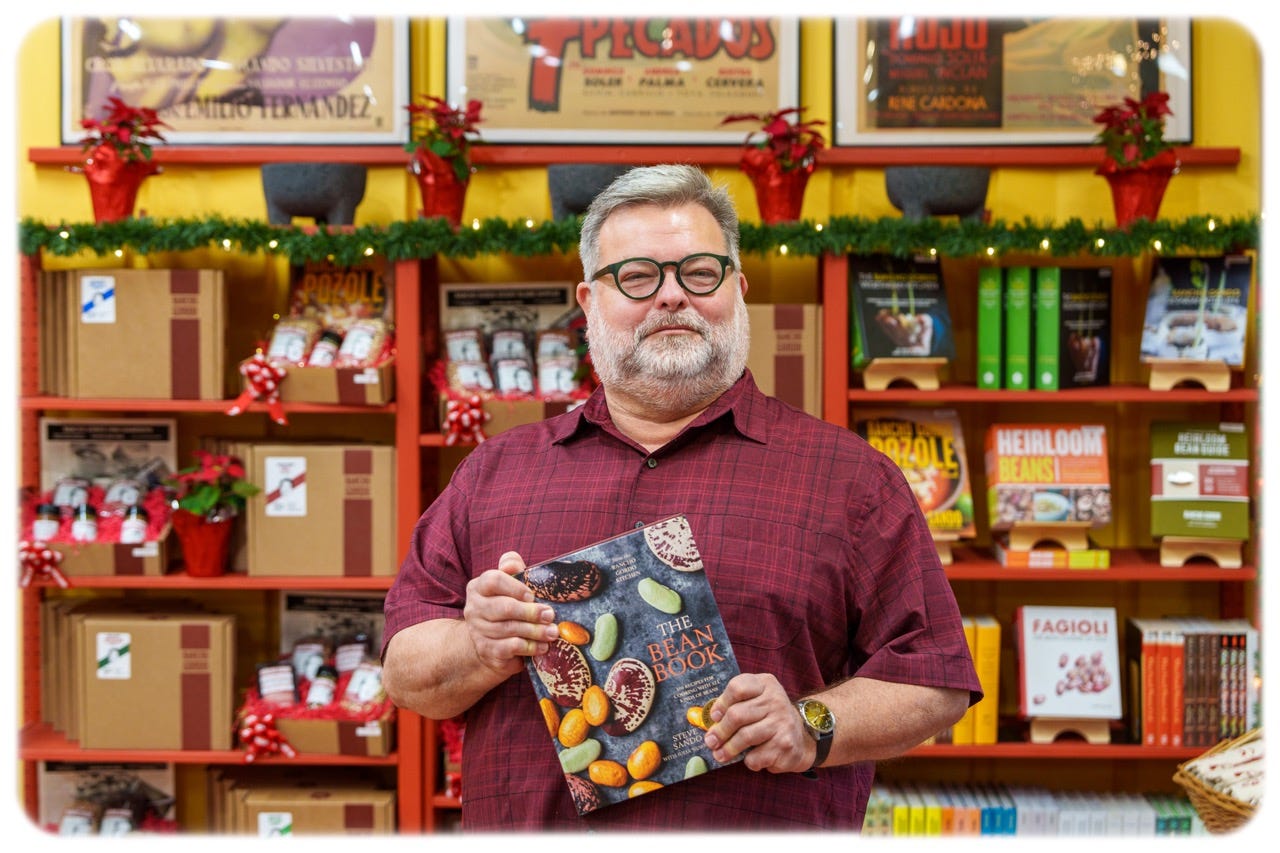

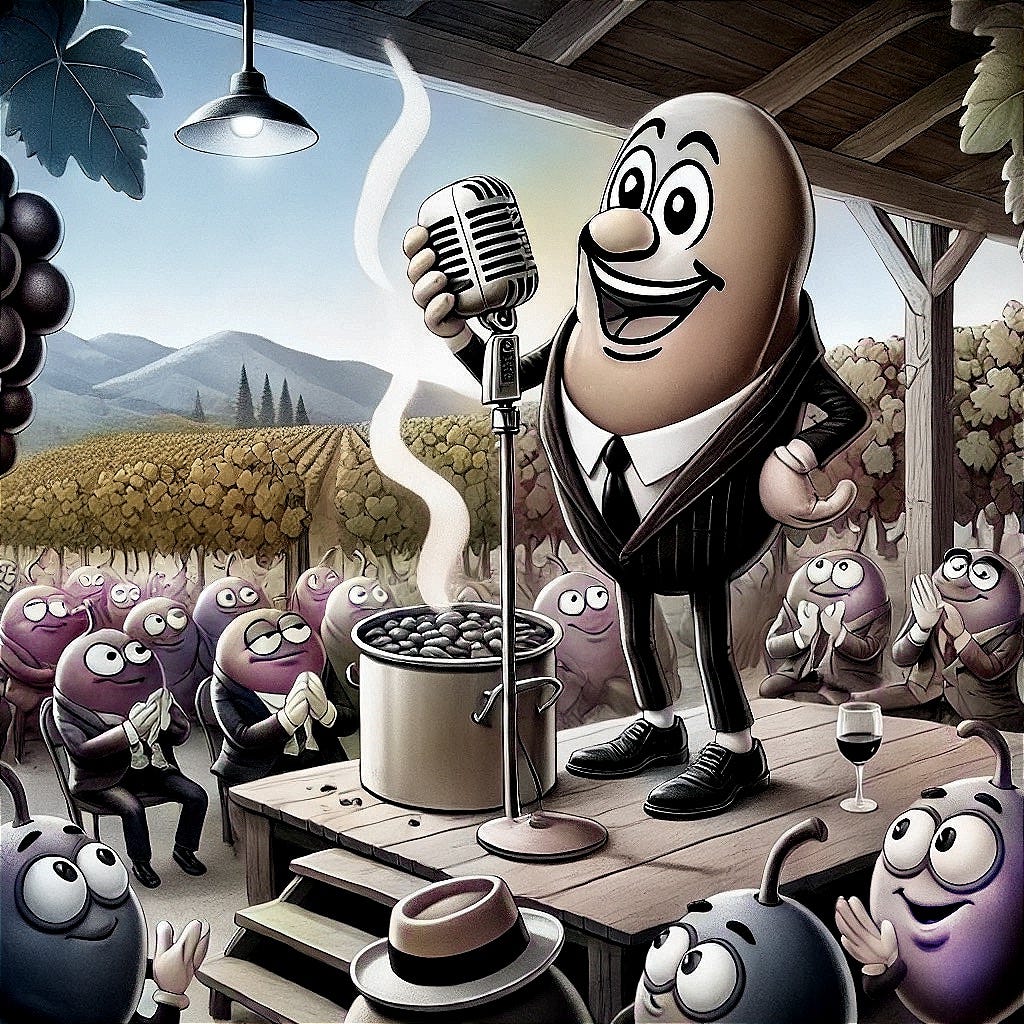


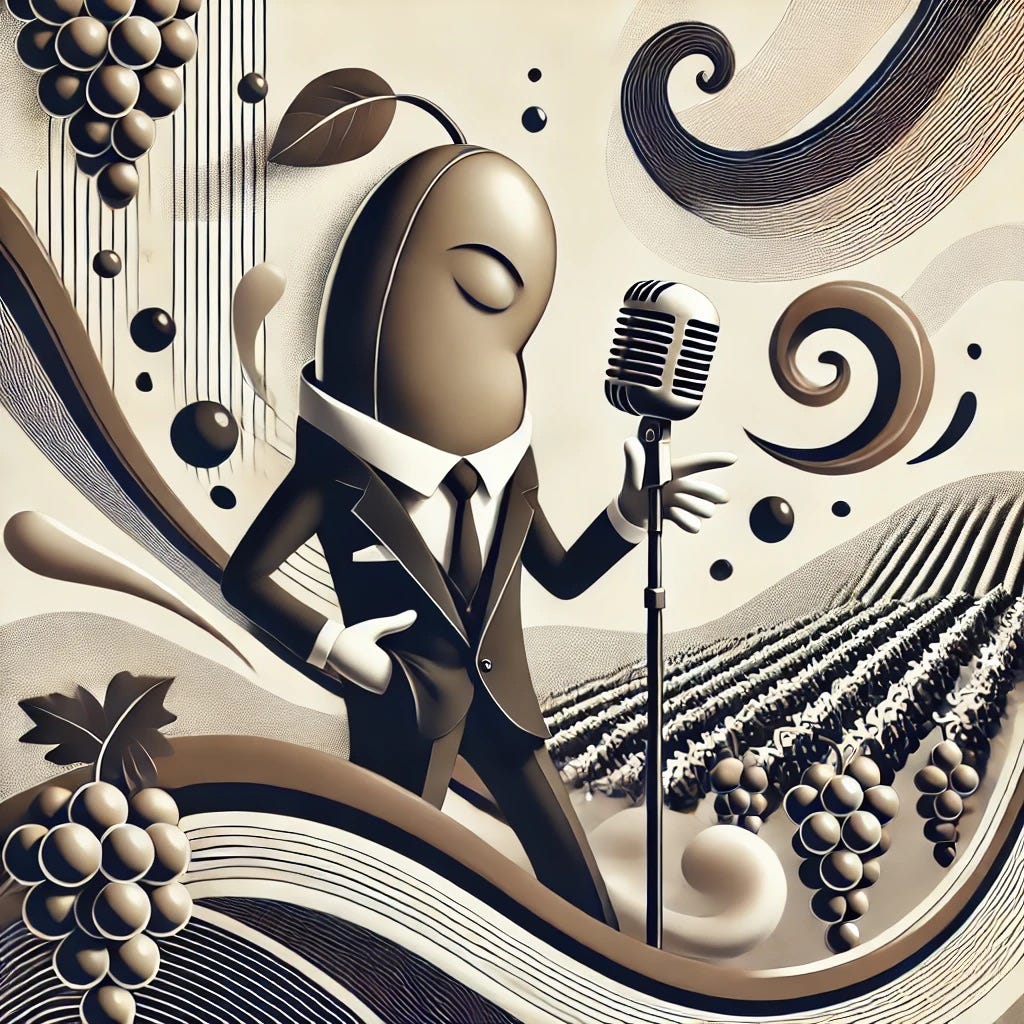
I was an Early Adopter of Rancho Gordo (EARG). Great product and I love to support a local business. Steve is such a nice man and he always has time for his customers. I have to hear him sing!
I did not understand whether you were asking if the City, County or populace should support. Having the populace aware through stories such as your is definitely on the right road to supporting an individual trying to succeed in a new venture! And we always need more of that. How about follow up stories on some of the 4H kids that have made enough money to go on to college and what they are doing now? Maybe more in depth about some of our artists and small galleries like Kerry Smith or personal interest stories about some of the wine tour drivers? There are lots of fascinating folks out there. And, PS, I first bought beans from Steve at the Chico Farmers Market in the early 2000s! Bravo Steve!